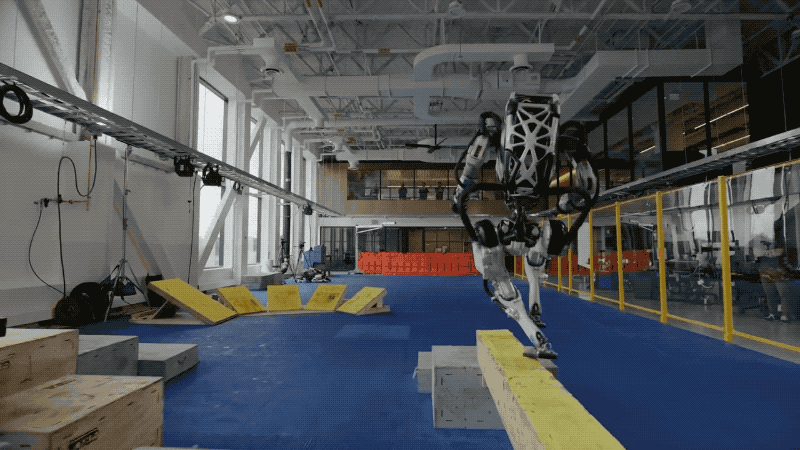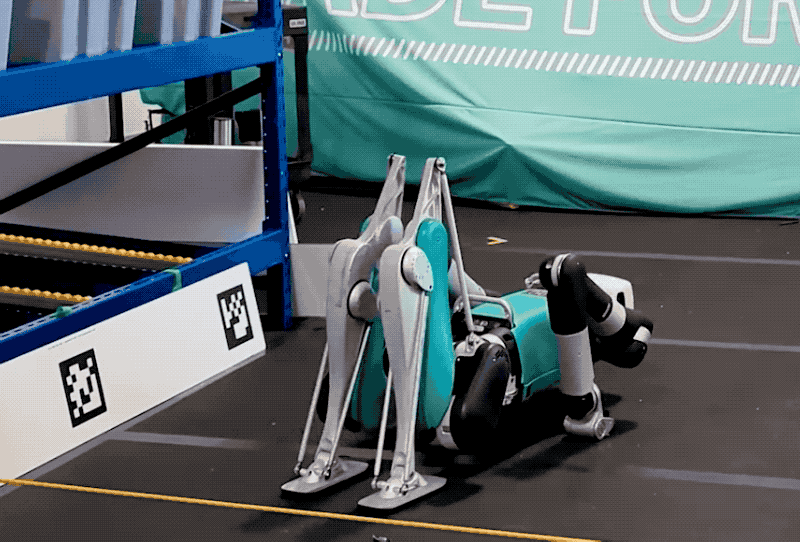Humanoid robots are studying to fall properly
6 min readsavvy entrepreneurs Last week at Boston Dynamics produced two main robotics information cycles. Naturally, the bigger of the 2 was Electric Atlas Announcement, As I write this, the lower than 40-second video is steadily approaching 5 million views. A day earlier, the corporate set the group’s coronary heart charges aflutter when it introduced that the unique Hydraulic Atlas being put out to pastureA decade after its launch.
The accompanying video was a celebration of the outdated Atlas’s journey from a DARPA analysis venture to an impressively agile bipedal ‘bot. However, inside a minute the tone adjustments. Ultimately, “Farewell to Atlas” is as a lot a celebration as it’s a blooper reel. It’s a welcome reminder that dozens of slips, falls, and sputters happen at any time when a robotic sticks a touchdown on video.

Image Credit: boston dynamics
I’ve lengthy supported this sort of transparency. This is one thing I want to see extra of from the world of robotics. Only displaying the spotlight reel is a waste of the trouble put into getting these pictures. In many circumstances, we’re speaking years of trial and error to make the robotic look good on digital camera. When you solely share constructive outcomes, you’re setting unrealistic expectations. Bipedal robots fall. In that respect, no less than, they’re similar to us. as agility put it just lately, “Everyone falls sometimes, it’s how we get back up that defines us.” I’d take it a step additional, saying that studying to fall properly is equally vital.
The firm’s newly appointed CTO, Pras Velagapudi, just lately instructed me that it is really a great factor to see robots coming into play at this degree. “When a robot is actually doing real things in the world, unexpected things are going to happen,” he notes. “You’re going to see some dips, however that is a part of studying to run for actually lengthy intervals of time in a real-world atmosphere. This is to be anticipated, and it is a signal that you simply’re not staging issues.”
A fast scan of Harvard’s guidelines to fall with out damage It displays what we intuitively perceive in regards to the fall of man:
- shield your head
- Use your weight to direct your fall
- bend your knees
- Avoid taking different folks with you
As far as robots are involved, it final 12 months’s ieee spectrum piece A terrific place to begin.
“We’re not afraid of falling — we’re not treating robots like they’re going to break all the time,” Boston Dynamics CTO Aaron Saunders instructed the publication final 12 months. “Our robot falls a lot, and one thing we decided long ago (is) that we need to make robots that can fall without breaking. If you can go through that cycle of pushing your robot to failure, studying the failure, and fixing it, you can make progress to where it’s not falling apart. But if you build a machine or control system or culture that never falls, you’ll never learn what you need to learn to make your robot not fall. We celebrate falls, even the falls that break robots.”

Image Credit: boston dynamics
The matter of decline additionally got here up after I spoke to Robert Plater, CEO of Boston Dynamics, forward of the launch of the Electric Atlas. Specifically, the brief video begins with the robotic being in a susceptible place. The manner the robotic’s legs transfer round is sort of new, permitting the system to face up from a totally flat place. At first look, it nearly feels as if the corporate is displaying off, utilizing the flashy gimmick merely as a technique of showcasing its extraordinarily sturdy custom-built actuators.
“It will have very practical uses,” Plater instructed me. “The robots are going to fall. It can be higher in case you might rise up from a susceptible place.” He provides that the power to rise up from a susceptible place may be helpful for charging functions.
Much of Boston Dynamics’ studying about falls got here from Spot. While the quadrilateral kind issue usually has extra stability (as evidenced by many years of movies attempting and failing to kick robots), spot robots function in real-world conditions for a lot extra hours than that. Are.

Image Credit: agility robotics
“Spot is running about 70,000 kilometers per year on the factory floor, and doing about 100,000 inspections per month,” says Plater. “Eventually they fall out. You have to have the ability to get again up. Hopefully you will scale back your drop fee – we have finished that. I believe we’re falling as soon as each 100-200 kilometers. The fee of decline has been actually small, however it does occur.”
Plater says the corporate has a protracted historical past of being “rude” on its robots. “They fall, and they have to be able to survive. The fingers cannot fall.”
Watching the Atlas outtakes above, it is exhausting to not lengthen a little bit human sympathy to the ‘bot. It seems that he really falls like a human being, pulling his limbs as near his physique as attainable, to guard them from additional damage.
When Agility added arms to Digit in 2019, it mentioned their position within the decline. Co-founder Jonathan stated, “For us, arms are simultaneously a tool for moving around the world – getting up after falling, waving your arms for balance, or pushing a door open – as well as a tool for manipulating or moving objects. Also useful for carrying.” Hearst famous on the time,
I gave a little bit discuss on this matter to Agility at Modex earlier this 12 months. A 12 months in the past, a video of a Digit robotic falling on a conference ground went viral on social media. “Even with a 99% success rate in nearly 20 hours of live demos, Digit still suffered some degradation on Promat,” Agility stated on the time. “We don’t have any proof, but we think our sales team arranged it so they could talk about Digit’s quick-change parts and durability.”
Like the Atlas video, the corporate instructed me that one thing just like the fetal place is beneficial by way of defending the robotic’s legs and arms.
The firm is utilizing reinforcement studying to assist fallen robots proper themselves. Agility shuts down the protection with Digit’s handicap to drive the autumn within the video above. In the video, the robotic makes use of its arms to mitigate the autumn as a lot as attainable. It then makes use of its reinforcement studying to return to a well-known place from which it is ready to get up once more with robotic pushups.
One of the primary promoting factors of humanoid robots is their means to suit into present workflows – these factories and warehouses are generally known as “brownfield”, that means they weren’t {custom} constructed for automation. In many present circumstances of manufacturing unit automation, errors imply that the system is successfully shut down except a human intervenes.
“Saving a humanoid robot is not a trivial matter,” says Plater, including that these methods are heavy and might be tough to repair manually. “How are you going to do that if it can’t land on its own?”
If these methods are going to make sure really seamless automation, they might want to collapse properly and get better once more.
“Every time a number drops, we learn something new,” says Velagapudi. “When it comes to bipedal robotics, falling is a wonderful teacher.”
(TagstoTranslate)Agility(T)Boston Dynamics(T)Humanoid(T)Humanoid Robot

